Contents
In the cloud world, Kubernetes has emerged as a big giant that is efficient to deliver robust, safe, and secure enterprise solutions. Google and Netflix are no doubt leading the race but other organizations are also focusing to acquire the Kubernetes services as early as possible.
What attracts enterprises towards Kubernetes is its open-source container orchestration engine. It provides a multiple activity platform that covers almost everything including AI and advanced cloud applications.
Kubernetes is a collection of orchestration tools. More than 71% of IT decision-makers use enterprise Kubernetes to manage their container infrastructure.
Kubernetes within a short span has become the first choice of cloud solution providers. The ecosystem of tools allows you to install and manage enterprise solutions.
The enterprise tools contain features to manage web-based interfaces, real-time monitoring, automatic updates, and faster deployments.
Kubernetes allows forming cloud-based clusters that are fully managed. As a result, you can focus strictly on deploying applications.
The solution you choose depends on your enterprise needs and how much effort you want to put into managing a Kubernetes cluster.
Mainly the two types of enterprise solutions are adopted:
1) hosted solutions
2) Solutions in your own data center
Here in this post, we are going to discuss the Kubernetes enterprise solutions so that you can opt for an ideal solution with more obvious benefits.
A Cloud Enterprise Solution: Kubernetes
The distributed environment to build multi-functional applications that can be delivered as a container is the latest way enterprises are adopting.
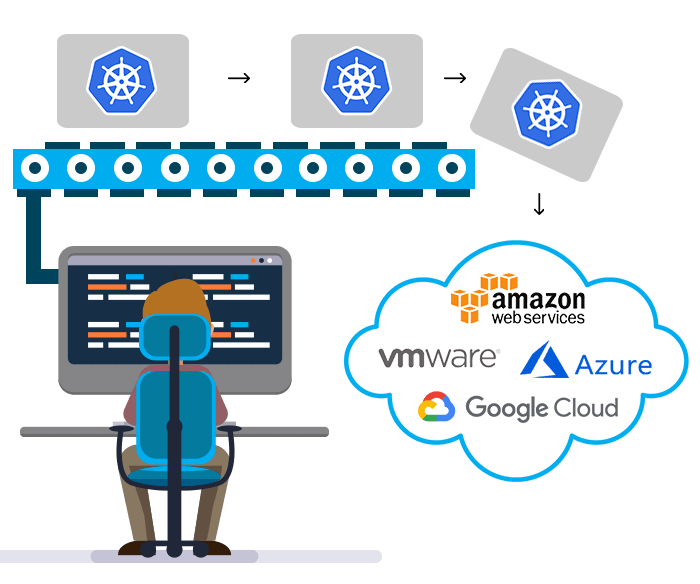
To divide the application into independently working function parts by managing the complexity and running through containers, a well-defined strategy is suggested.
Kubernetes is an open-source, extensible container orchestrator designed to handle these challenges.
Enterprises have to adopt innovative and advanced level technologies to meet the rapidly changing demands of the industry.
To meet such demands, Kubernetes is one of the most effective solutions for implementing bespoke enterprise-grade solutions. Some of its services include:
- Kubernetes Implementation
- Kubernetes Consulting
- CI/CD Pipeline Implementation
- Kubernetes Support
Kubernetes provides cloud-native enterprise solutions after evaluation of the current workflows and workloads for overcoming bottlenecks.
The aim is to build a successful future path for building your Kubernetes enterprise solutions.
What Is Kubernetes?
Kubernetes emerged as an open-source orchestration platform to manage distributed, containerized applications on a large scale.
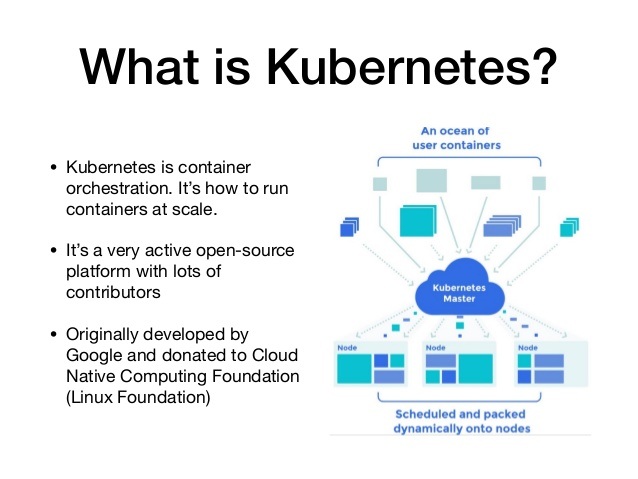
Kubernetes is completely a virtual platform that can run all types of business applications irrespective of software and platform.
An API-based structure is adopted that creates an environment to execute web applications, batch jobs, and databases.
Here the entire application is placed in a container and decoupled from the native environment.
Kubernetes is responsible for choosing the right resources for the execution of the application.
The Origin Of Kubernetes
Using containers for running business applications is not a new concept. Google was the first organization to run containers on a massive scale before Kubernetes was introduced in 2014.
Kubernetes is a result of Google’s tireless efforts for more than 15 years. Borg, was the first attempt in order to run batch applications for a long period.
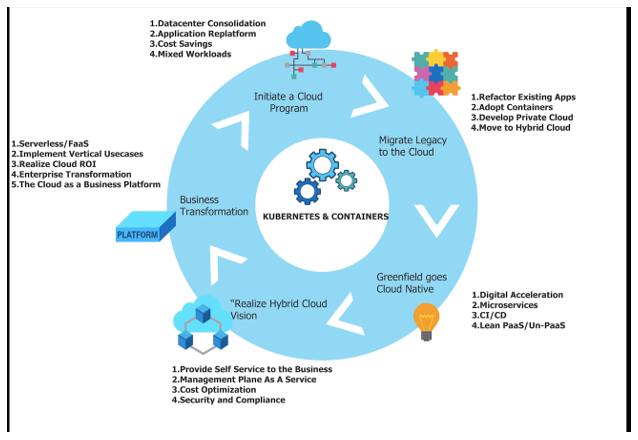
After this success, the company created an intelligent ecosystem of tools and services for:
- Autoscaling.
- Self-healing infrastructure.
- Configuration and updating of batch jobs.
- Service discovery and load balancing.
- Application life-cycle management.
- Quota management.
From this information, Kubernetes is the third generation after the first Borg project, and second-generation, Omega, a baseline of Apache Mesos.
Omega was the improved version of Brog with a better scheduler to perform diverse jobs. Google wanted a system to manage workloads, a complex task required for the long term, big projects with many teams working on it.
With Omega, the scheduler was divided into two separate schedulers with a central shared-state repository to mitigate conflicts. This solution worked but was complex; a better system was needed.
Kubernetes is a combination of Borg and Omega controller. Kubernetes was designed to attain simplicity by eliminating complexity to manage infrastructures.
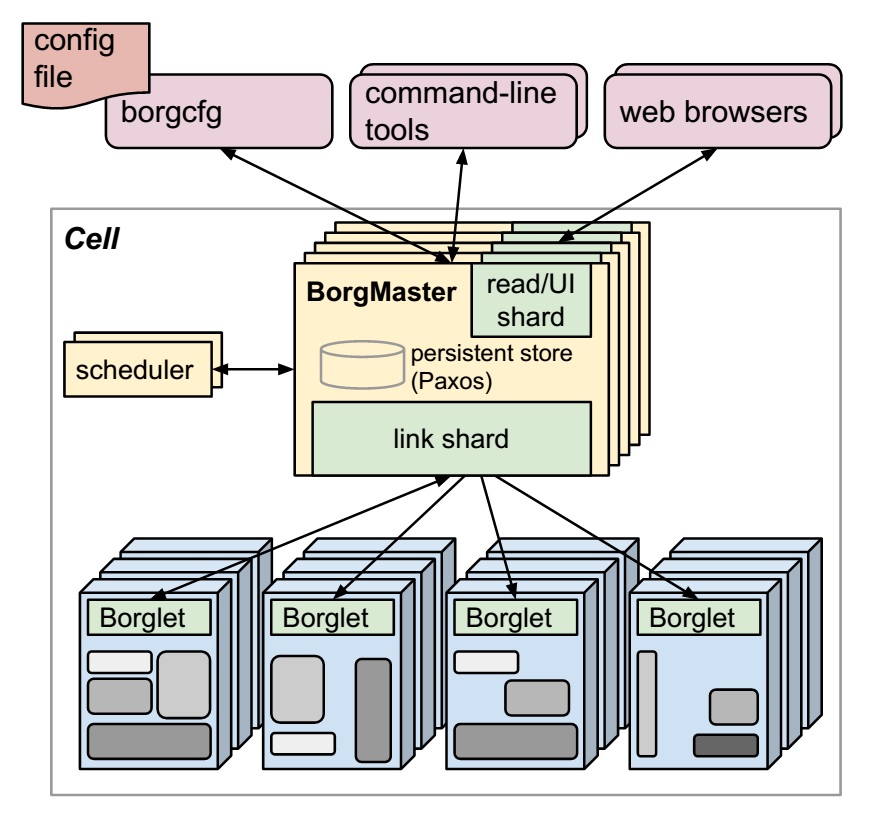
Since its launch, Kubernetes has successfully managed huge projects. Today, it has a community of expert-level dedicated developers that continue to support and contribute to its growth.
Benefits Of Kubernetes
Containers are the new way of running applications. There is a swift shift from VMs to containers which might be a costly affair for some applications. As we see the latest trends, enterprises must be ready to adopt the change in form of containerized setup for running applications.
Scalability
Kubernetes scales your cluster according to your project requirements that help in saving money and resources. When you are running applications that have heavy traffic and on occasions, it reaches its peak. In such cases, you wish to have a cluster that can scale up by increasing dynamically to meet the demands.
Kubernetes introduces Cluster Autoscaler and Horizontal Pod Autoscaler features, to meet this big traffic management challenge.
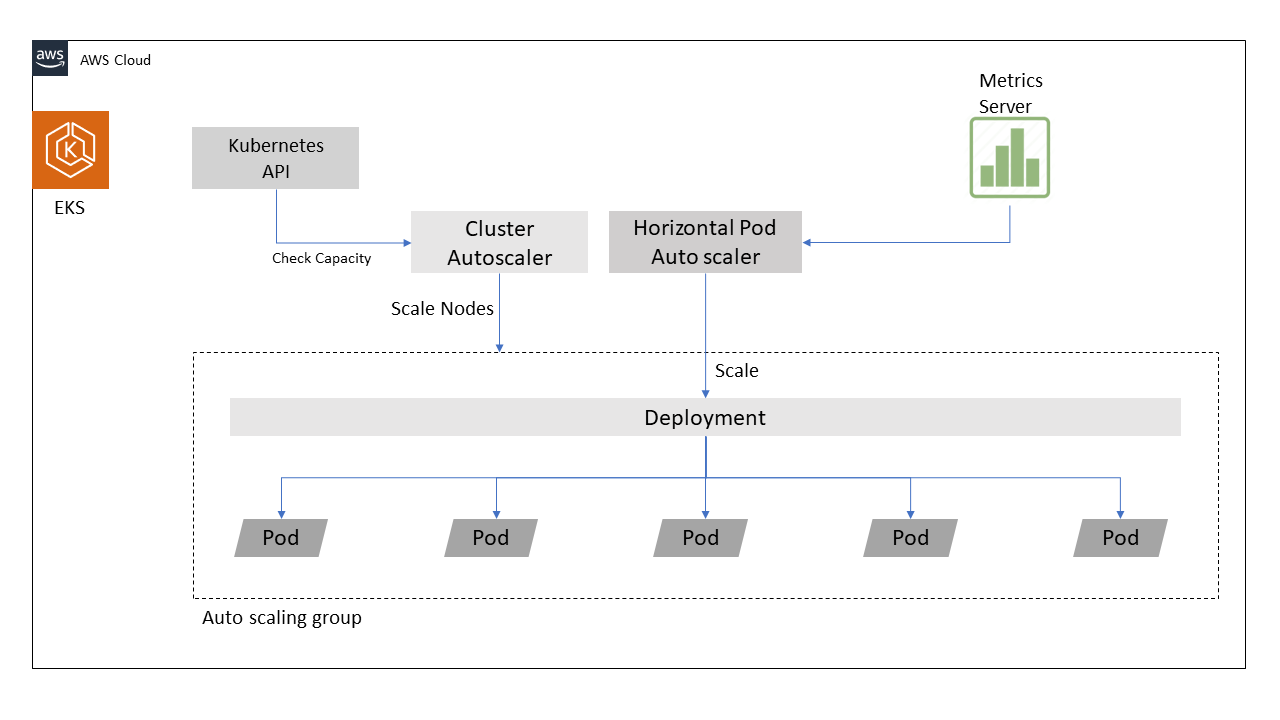
Portability
Kubernetes has the anywhere/anytime run feature that allows applications to execute from various places such as your data center, a public cloud, and so on.
It also runs in a hybrid configuration of both public and private instances. However, the command system remains constant everywhere.
Consistent deployments
Kubernetes deployments are consistent as they are completely run in the virtual environment. Containers have the immutable infrastructure, and all the dependencies and setup instructions required to run an application are bundled with the container.
One of the major benefits of containers is that they provide consistent service. There are no connection breaks, network issues, and other infrastructure-related issues.
They produce mass output that remains identical. Due to their immutable nature, additional configuration changes are prohibited.
The shifting among containers makes it more worthwhile. The developers can focus on the growth of applications rather than spending long hours in debugging.
Separated and automated operations and development
One more benefit of containers is that all the teams like production, testers, marketing, etc. can view the application in their required mode and come to know about the updates and modifications that are done.
The intelligence and automation of Kubernetes, operations provides a stable platform where every process is accomplished thoughtfully. The container saves time by eliminating the iteration process.
What To Consider When Adopting Kubernetes
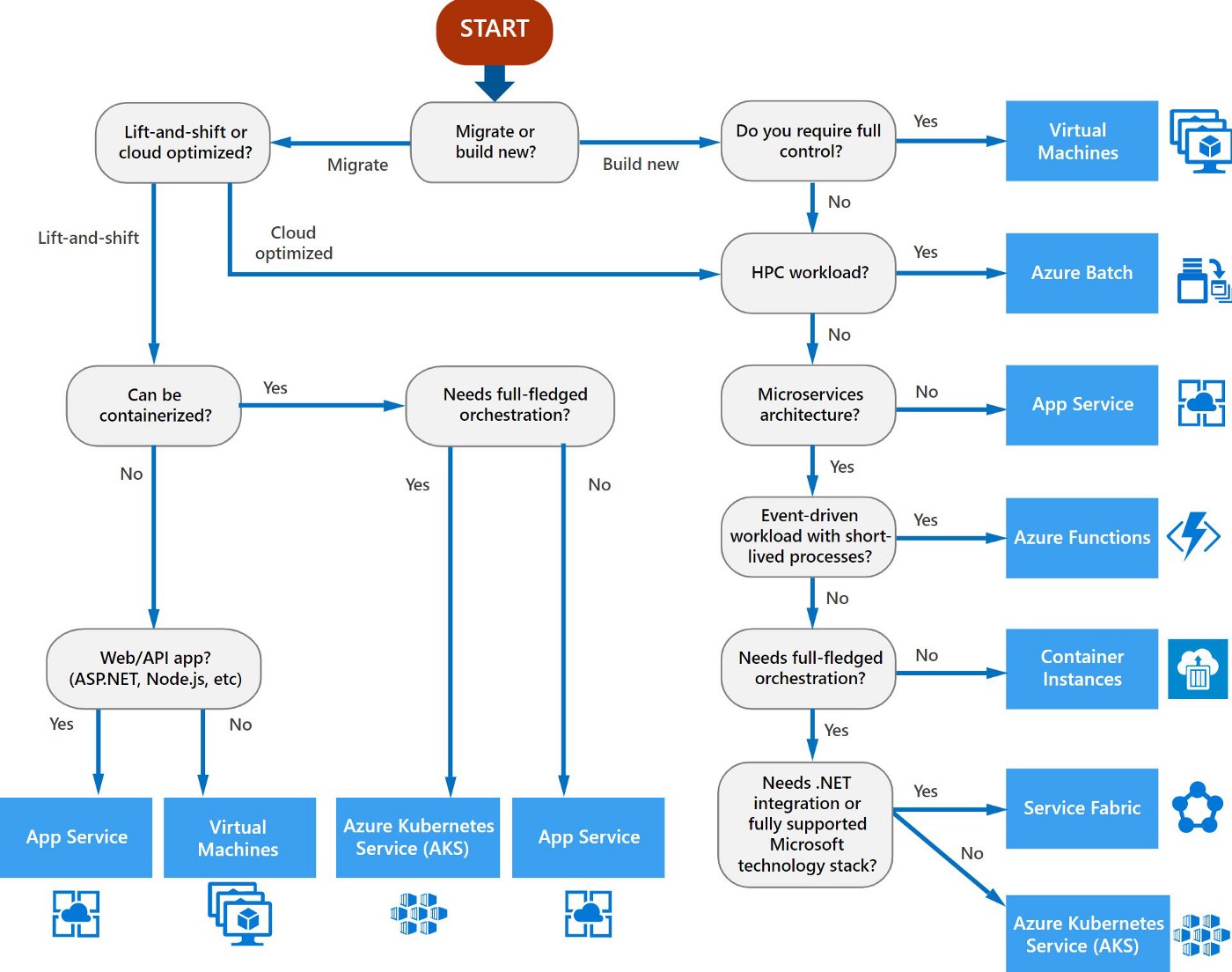
Before we shift our applications to Kubernetes, let’s discuss a few questions?
- How do you develop and manage applications today?
- What is your hybrid cloud strategy?
- How will you manage the life cycle of your Kubernetes solution?
It is pretty clear that advanced applications need a cloud environment to run. The new applications are developed to run through the cloud setup.
The concept of container classes is becoming common practice for big applications. Kubernetes is becoming the biggest enterprise application platform that is cost-saving and independent to run from any server.
However, many organizations choose to install and manage Kubernetes on their own, others prefer to work with vendors that provide commercial support for Kubernetes deployments.
In addition to providing production support for Kubernetes, vendors can:
- offer managed upgrades and critical patches.
- Increase security for Kubernetes and applications running on Kubernetes.
- Validate a range of third-party integrations, such as container registries, storage, networking, cloud services, and monitoring, logging, and alerting solutions.
- Commercially supported Kubernetes solutions vary widely, so take careful note of your team’s needs when deciding whether to seek additional support and with whom to work.
Kubernetes Enterprise Solutions
For enterprises Kubernetes offers the following solutions:
To PaaS or Not to PaaS
PaaS solutions are adopted by organizations working on one platform. This is one of the popular and most cost-effective solutions for the normal working of an enterprise. A consistent process is followed that leads to bottlenecks in large organizations.
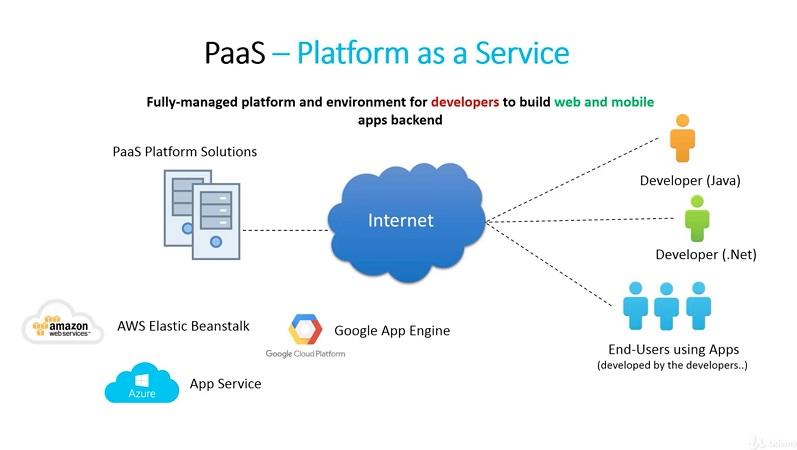
But, It limits what developers can do with their Kubernetes installation. Importantly, it restricts how software is developed, putting restrictions at various points, and forcing culture of “workarounds.”
Here the enterprises have to decide whether they are willing to give the entire infrastructural control to the PaaS provider.
Well, PaaS is most suitable for organizations that are focusing on developing highly customizable apps rather than emphasizing building infrastructure.
An Easy and Convenient Cloud Environment
Cloud-hosted Kubernetes is chosen for convenience. But approaching a vendor to manage your infrastructure and apps through cloud setup is again restricting the developers from trying some new ways to develop applications. When you are moving to start using Kubernetes, then it might be a good option.
Amazon Elastic Kubernetes Service (EKS), Microsoft Azure Kubernetes Service (AKS), and Google Kubernetes Engine (GKE) are few vendors that are helping organizations to start with Kubernetes. Here the maximum control is with the vendor.
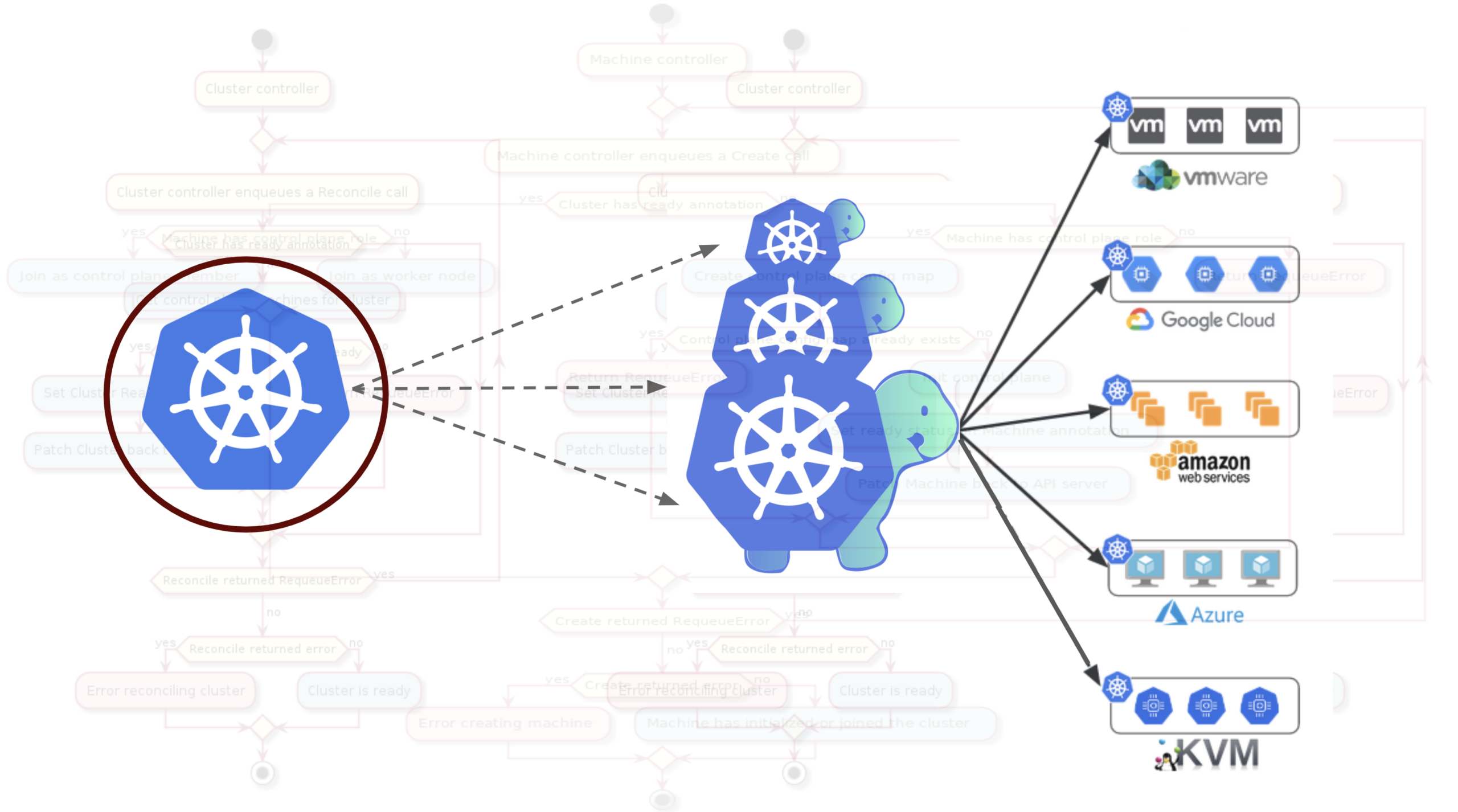
In case you are willing to integrate with other enterprise solutions and/or run in a hybrid/multi-cloud setup, it’s likely not the right solution for you.
If that is not the portfolio of your company then it is the easy-go solution for you. Moreover, cloud vendors today are taking steps to integrate across the board and especially with the most popular open-source tools like Istio, and Prondorsmetheus.
Managing Kubernetes for You
Here in this category, managed Kubernetes services are provided by the vendors to the enterprises.
These vendors offer managed Kubernetes clusters in their own data center, on-premise, or in public clouds and provide enterprise support.
Also Read: Deploy Rancher On Kubernetes Cluster
They allow you to deploy to multiple public cloud platforms, and in some cases to serverless platforms as well.
Having started delivering Kubernetes services even before the big cloud vendors, these managed service providers have evolved along with the Kubernetes ecosystem.
Also Read: How to Setup Dynamic NFS Provisioning Server For Kubernetes?
Native Kubernetes Platforms: Dev vs. Ops
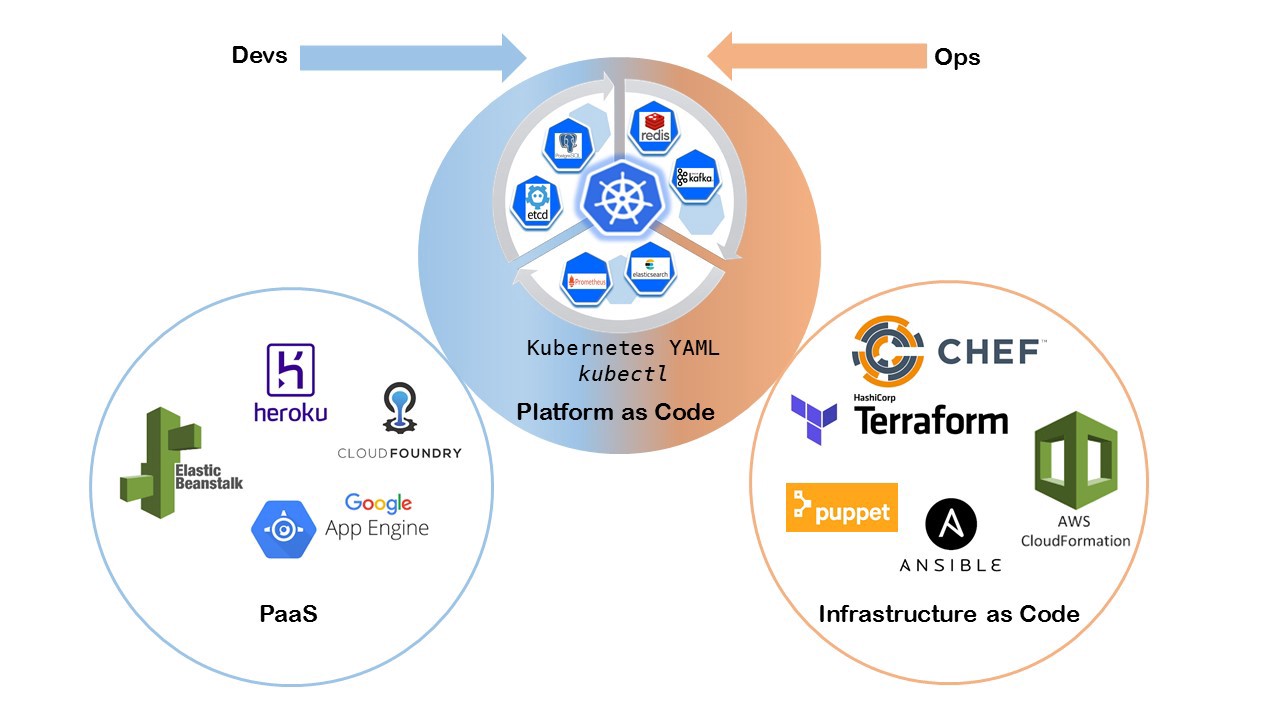
This is indeed a destination while working with Kubernetes as you can integrate with many cloud service providers. They allow users to manage all their Kubernetes clusters across multiple environments using a single panel.
In short, a collaborated Kubernetes management layer for all your environments. Where they tend to differ, is in their main user focus: developer vs. operations focus.
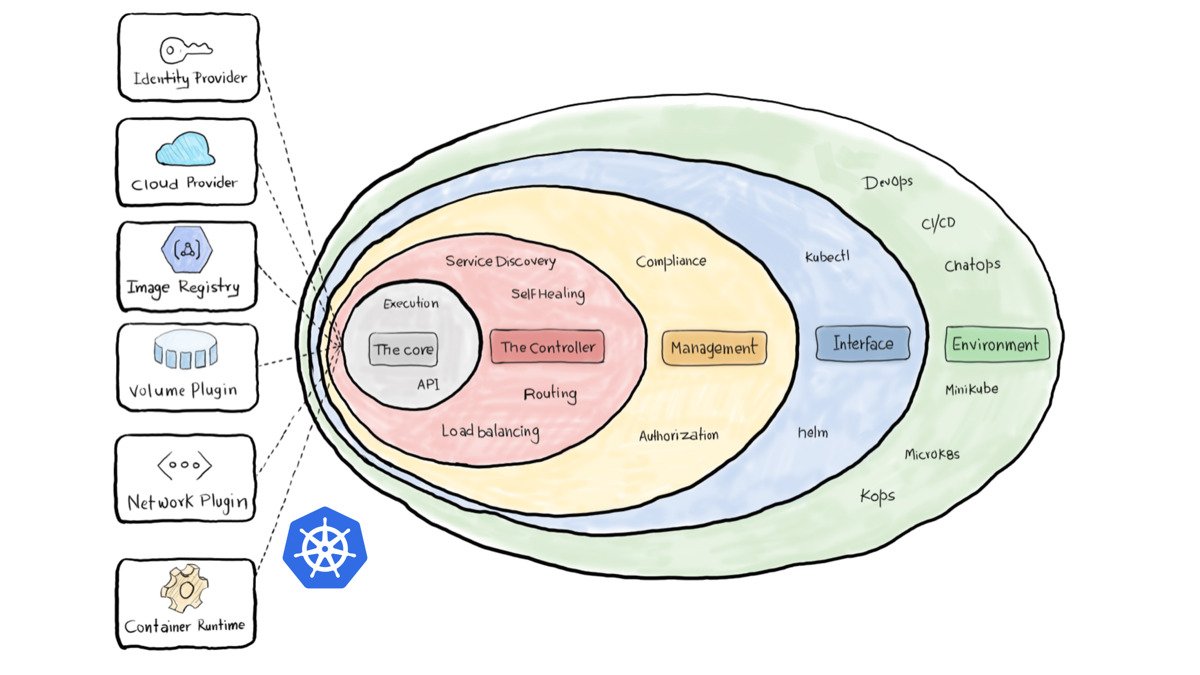
Now, while the former is without a doubt geared toward user-friendliness and ease of use, it’s the latter you want if you need operational control to take advantage of Kubernetes’ more advanced capabilities.
Challenges of Enterprise Kubernetes
Installing, deploying, and managing Kubernetes is easier said than done. 75% of users Face challenges in implementation and operations to using Kubernetes in production.
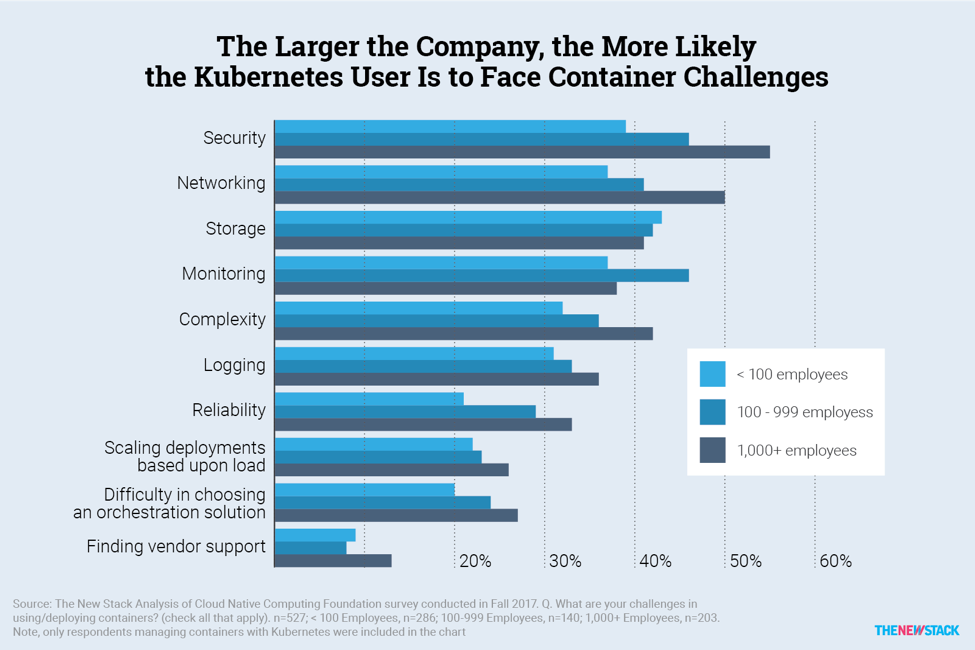
Enterprises need to consider security, multi-tenancy, and integration with the existing setup. Yes, before implementation, evaluation of the existing setup is important.
Deployment
During the deployment stage of Kubernetes, it is vital to configure t rightly by identifying the pressing points and security accesses. The storage options, networking, and container registry solutions are necessary to integrate for maximum throughput.
Hardening
After deployment, the setup needs to be integrated with more solutions, including platform monitoring, security hardening, and logging solutions. The segmentation of the resource among the different teams must be done carefully.
Operation
When Kubernetes is fully operational, all layers of the stack – the Linux container host, Kubernetes itself, and the services running on top of Kubernetes – require continuous monitoring, patching and updates.
Kubernetes Architecture for Enterprise Solutions
Kubernetes is an open-source well-developed platform comprising hundreds of components. It is a complex setup comprising various elements. Let’s understand how its internal architecture works to provide numerous benefits to the enterprises
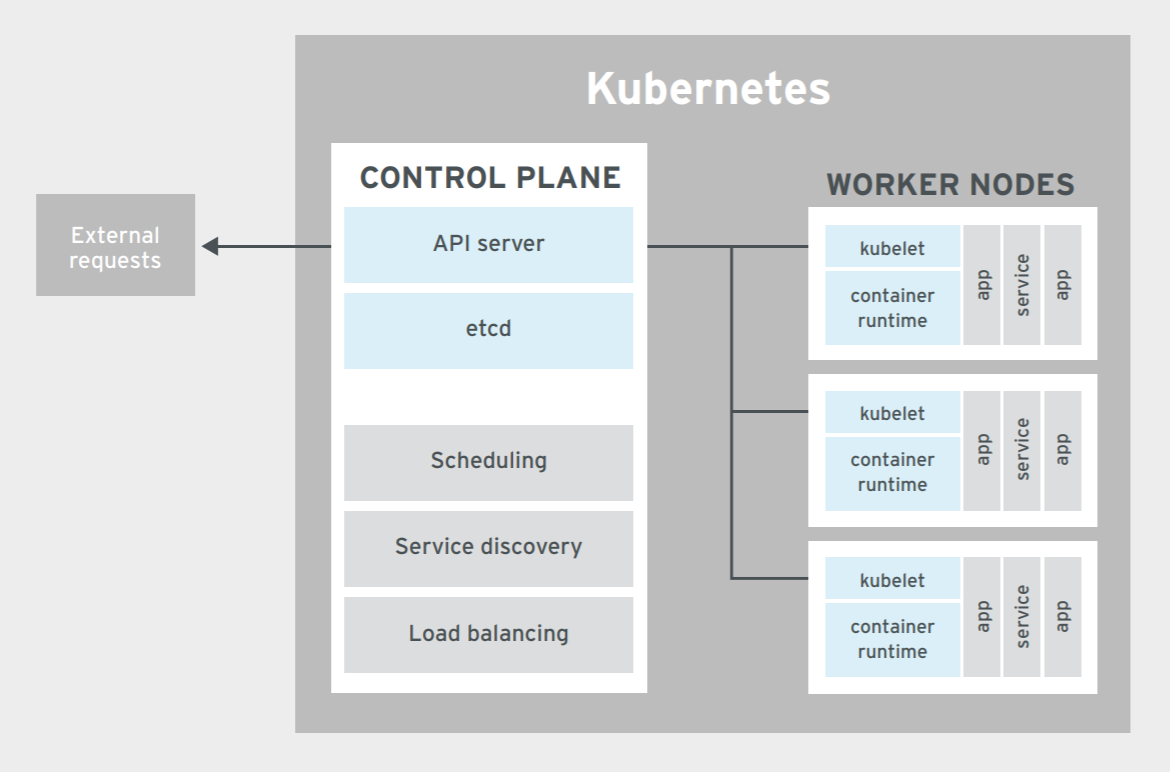
Kubernetes is a software layer with a combination of clusters of servers for containerized applications. These servers are either master or worker nodes. Together they run applications or services.
Control plane
The control plane is nearly equivalent to the master nodes that act as the main source of the Kubernetes cluster. The control panel is responsible for providing services such as scheduling, service discovery, load balancing, and resource management capabilities.
Here in this discussion, we are considering them as parts of the control plane.
API server:
It is the main source from where the applications are run. The API server receives and sends requests. The server determines the validity of the request and checks for the right t access the application by the sender.
Etcd:
It acts as the functional area of Kubernetes where everything is getting stored. As a fault-tolerant, inherently distributed key-value store, it is the primary component of Kubernetes. It acts as the source for clusters, for storing their information.
Worker nodes:
A worker node is responsible for running an application or service. A cluster has many worker nodes, and users are allowed to create new nodes to scale Kubernetes.
Kubelet:
Every node contains a kubelet that is responsible for setting the communication with the control plane. It performs requested actions on the worker node acting as the head machinery of the system The kubelet accepts the commands from the control plane and executes the action.
Container runtime engine:
It compiles and runs containerized applications. It is the conduit between a portable container and the underlying Linux kernel.
Missing from Kubernetes
Despite Kubernetes offering portability, scalability, and automated, policy-driven management to its users, it is still not a complete solution.
To build, run, and scale complex containers is a tough task Sometimes in production, such as the operating system, continuous integration/continuous delivery (CI/CD) tooling, application services, or storage, Kubernetes has to depend on other resources.
A large amount of work also needs to be done to set roles, access control, multitenancy, and secure default settings.
Kubernetes does provide pluggable interfaces for many of these components and services, offering flexibility and choice for users.
Requirements for Kubernetes Enterprise Solution
Cloud Provider Solutions
Implementing a Kubernetes cluster can be difficult and time-consuming. To reduce the time to deployment, several cloud providers provide fully managed Kubernetes clusters.
- Google Kubernetes Engine (GKE)
- Azure Container Service (AKS)
- Amazon Elastic Container Service for Kubernetes (EKS)
Flexible or On-Premise Solutions
The following companies provide a management layer over Kubernetes that adds features without restricting you to a specific vendor.
These solutions can be deployed to almost any infrastructure including your datacenter.
Native Kubernetes Platforms
For the operational teams, a successful implementation with complete resources should be the focus of whichever software application they are opting.
Everything boils down to the reliability, ease, and security of the solutions. Some of the applications are:
- Rancher – Have you Googled to get the answer to questions like how to setup Kubernetes with rancher? Are you looking for ways to setting up Kubernetes clusters in Rancher? How to setup a Kubernetes cluster with rancher?
- Kubernetes Dashboard
- Kubelet
- Helm
- Kubesplay
Note: Here we would like to make it clear that Kubernetes native tools differ from cloud-native tools in terms of portability and adaptability. However, many similarities are found between the two.
To adopt the hybrid cloud environment using multiple cloud service providers is the main aim of Kubernetes native platforms.
A Comparison with other Enterprise Solutions
When it comes to comparing and choosing the best Kubernetes enterprise solution, many parameters are set and continuous performance in a real-time environment is tested.
However, an ideal solution must have the following features;
- Higher uptime
- Remote Monitoring and Healing
- Remote Upgrading and Instant Security Patching
- Central management across on-premise data centers, public clouds, and at the Edge.
- Upstream open-source solution
For more information on practical solutions and the comparison, you can refer to the below-given Details PDF
Kubernetes Management for Enterprises
So, before implementing one of the enterprise solutions of Kubernetes discussed above, it is important to look for a fast-track production-ready, cloud-native infrastructure.
An enterprise Kubernetes management solution must be able to simplify provisioning, operations, and lifecycle management of an application small or big.
Some of the features which you must consider are:
- Partner with a partner that is providing a deployment in a few clicks
- Must be able to provide persistent storage
- High scalability with no limits on the platform and other decisive matters
·Must be able to upgrade nodes and versions without downtime
·Must maintain communication by monitoring, logging, and sending alerts
Conclusion
From the above in-depth study, it is clear that there are various types of Kubernetes enterprise solutions varying widely, so take careful note of your team’s needs when deciding whether to seek additional support and with whom to work.
Once you are ready to start your journey with the Kubernetes enterprise solution, you have to stick to it as it won’t be feasible for an organization to move on to another solution as the infrastructural cost is high.
Whichever Kubernetes solution you choose, make sure that it provides easy management tools to maintain the cluster and containers with ease.

Director of Digital Marketing | NLP Entity SEO Specialist | Data Scientist | Growth Ninja
With more than 15 years of experience, Loveneet Singh is a seasoned digital marketing director, NLP entity SEO specialist, and data scientist. With a passion for all things Google, WordPress, SEO services, web development, and digital marketing, he brings a wealth of knowledge and expertise to every project. Loveneet’s commitment to creating people-first content that aligns with Google’s guidelines ensures that his articles provide a satisfying experience for readers. Stay updated with his insights and strategies to boost your online presence.
